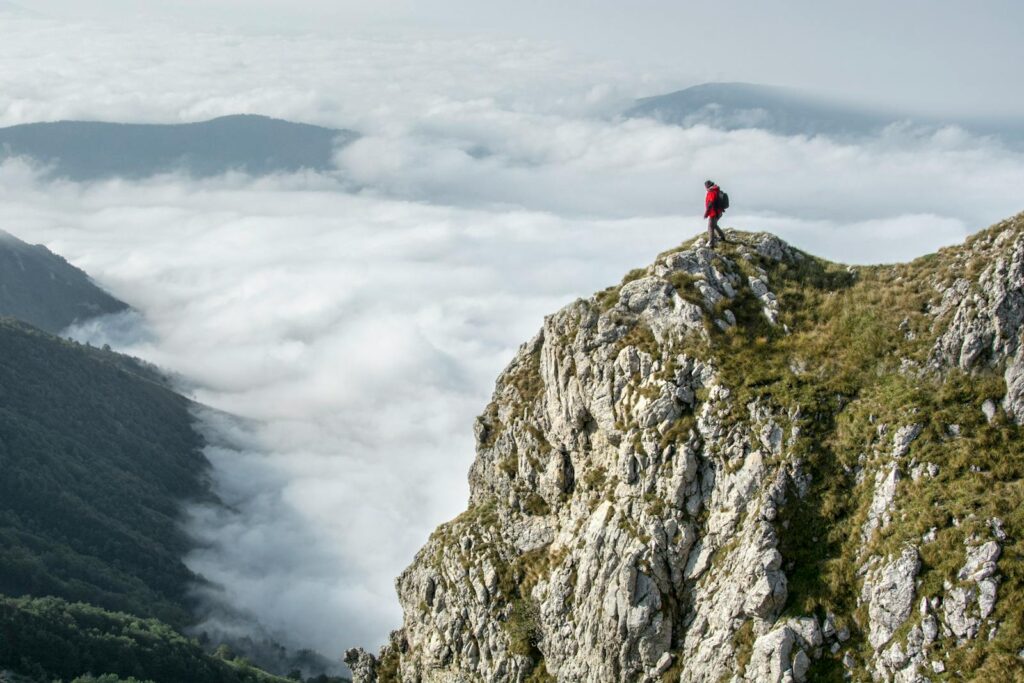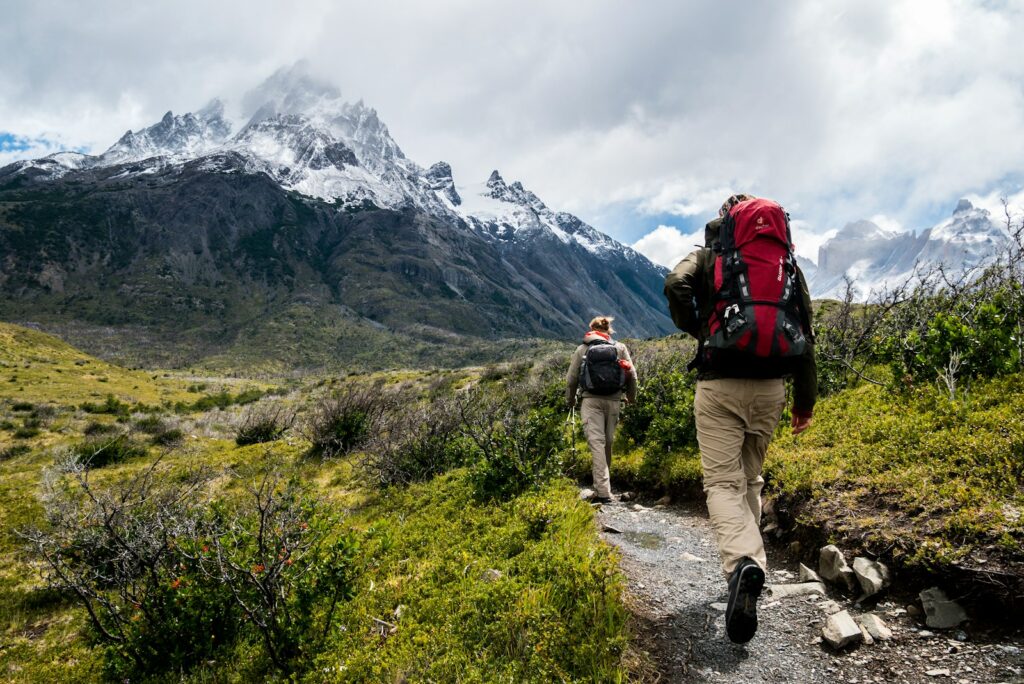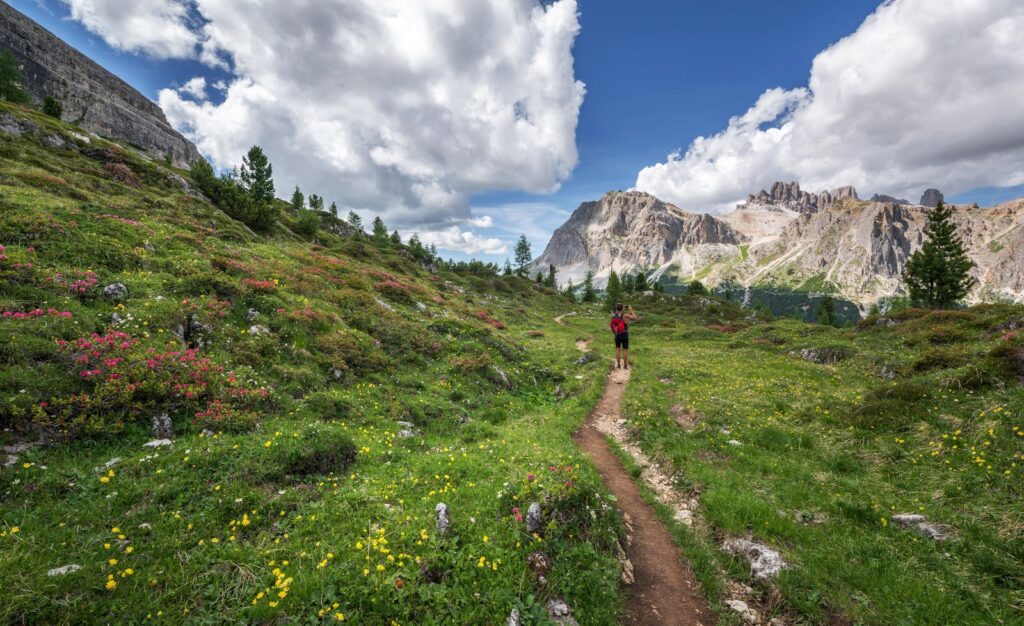When we venture into the great outdoors, our eyes often follow the path beneath our feet. We’re careful not to trip over roots or slip on loose rocks, focusing downward to ensure safe footing. While this instinct serves an important purpose, it also means many hikers miss out on half the experience—everything that exists above eye level. From magnificent tree canopies to geological wonders, from birds of prey to weather patterns, the upward view offers a dimension of hiking that too many travelers overlook. The natural world extends in all directions, and training yourself to look up regularly opens an entirely new perspective on familiar trails and wilderness areas.
The Hidden World Above: What Most Hikers Miss

The average hiker spends approximately 70% of their time looking at the ground or straight ahead, according to informal observational studies conducted by outdoor education organizations. This downward focus means missing a significant portion of the surrounding environment. Towering tree species, unique cloud formations, birds soaring overhead, and distinctive rock formations often remain completely unnoticed. Many hikers complete entire trails without ever witnessing the complex architecture of forest canopies or the intricate patterns of sunlight filtering through leaves. By maintaining awareness of what lies above, hikers transform a one-dimensional experience into a fully immersive journey through natural landscapes.
Safety Considerations: Spotting Potential Hazards

Looking up while hiking isn’t just about appreciation—it’s also a critical safety practice. Dead branches, known as “widowmakers” among experienced outdoorspeople, can fall without warning and cause serious injury. Weather conditions can change rapidly in certain environments, with approaching storm clouds often visible long before rainfall begins. In mountainous regions, looking up helps hikers spot loose rocks or potential avalanche conditions on slopes above the trail. Animal activity, particularly in habitats with larger predators like mountain lions or bears, sometimes becomes apparent first through movement in trees or on higher ground. Regular upward scans should become part of every hiker’s safety routine, complementing the attention paid to the trail itself.
Spotting Wildlife You’d Otherwise Miss

The biodiversity visible when you look upward often differs dramatically from what you encounter at eye level. Numerous bird species spend the majority of their time in higher branches, visible only to those who consciously scan the canopy. Squirrels, martens, and other arboreal mammals frequently travel above hiking paths, using branches as highways through the forest. Even larger animals like bears sometimes climb trees, while monkeys and sloths in tropical environments rarely descend to ground level. In desert environments, hawks and eagles soar on thermals, scanning for prey far below. Taking time to look upward transforms a hiker from a passerby into an observer of complex ecological interactions happening overhead.
Geological Wonders Often Overlooked

Many hiking trails pass through areas of remarkable geological significance that are only visible when looking up. Cliff faces reveal millions of years of geological history through their distinct layers and formations, telling stories of ancient seas, volcanic activity, or glacial movements. Rock arches, balanced stones, and dramatic overhangs often escape notice when hikers focus solely on the path. In slot canyons and river gorges, the most spectacular features typically extend upward, with sunlight creating dramatic patterns as it filters through narrow openings. Even in less dramatic settings, erosion patterns and rock colorations provide clues about an area’s geological past that are only apparent when hikers remember to raise their gaze.
The Astronomical Connection: Daytime Sky Observation

The sky itself offers constant change and beauty that enriches any hiking experience. Cloud formations provide not only aesthetic value but also practical information about approaching weather systems that might affect hiking conditions. During daylight hours, phenomena like sun halos, light pillars, and unusual rainbow formations occasionally appear, offering rare and memorable sights. Migrating birds often form distinctive patterns visible against the sky, particularly during seasonal transitions. In open areas without light pollution, even daytime astronomical events like partial solar eclipses or visible planets can be observed by the attentive hiker who remembers to look upward. The sky provides a dynamic backdrop that continually transforms throughout a hiking journey.
Improved Awareness of Changing Weather

Weather conditions in wilderness areas can shift rapidly, sometimes with serious consequences for unprepared hikers. Regularly looking up provides early warning of approaching storm systems, allowing hikers to adjust plans before conditions become dangerous. Cloud types and formations offer valuable information about atmospheric stability and precipitation likelihood that could affect trail conditions. In mountainous regions, weather can vary dramatically between valleys and peaks, with storms sometimes visible developing over distant elevations. Wind direction changes, visible through tree movement at canopy level, often precede temperature shifts or precipitation. This awareness of overhead conditions gives hikers valuable time to find shelter, adjust clothing layers, or even abort hikes when necessary.
Photography Benefits: Capturing Vertical Perspectives

Photographers who hike frequently develop a habit of scanning upward, understanding that some of the most compelling images incorporate vertical elements. Light filtering through tree canopies creates dramatic rays and patterns that professional photographers specifically seek out during “golden hours” near sunrise and sunset. Dramatic cloud formations, particularly in mountainous regions, provide background elements that transform ordinary landscape photographs into extraordinary images. Wildlife photographed from below against sky backgrounds often creates more dynamic compositions than standard eye-level shots. Even architectural elements on maintained trails, such as bridges or observation towers, generally photograph more impressively when captured from lower angles looking upward, emphasizing their scale and integration with the surrounding environment.
The Seasonal Transformation Above

Looking upward reveals seasonal changes that might otherwise go unnoticed on familiar trails. Spring brings delicate new growth and flowering at canopy level before many ground-level plants show similar development. Summer creates full, verdant canopies that filter sunlight in distinctive patterns on forest floors. Autumn’s famous color transformations often begin at the tops of trees, with upper branches changing weeks before lower sections. Winter reveals architectural elements of trees normally hidden by foliage, exposing nests, growth patterns, and the intricate structure of branches against the sky. Each season offers unique overhead perspectives, allowing hikers who remember to look up to experience familiar trails in completely different ways throughout the year.
Navigation Advantages of Upward Awareness

Traditional navigation techniques often incorporate overhead elements that many modern hikers overlook. Ridge lines, distinctive peaks, and mountain silhouettes provide reliable landmarks that can help orient hikers who understand their significance. The sun’s position, visible through breaks in vegetation, offers directional information that serves as a backup to compass readings. In areas with established trails, canopy breaks often indicate approaching clearings, trail junctions, or changes in terrain before they’re visible at ground level. Even experienced hikers using GPS devices benefit from overhead awareness, as satellite reception typically improves in areas with less canopy coverage. This connection between the sky and navigation represents one of the oldest relationships in human travel through wilderness areas.
Mindfulness and Presence: The Psychological Benefits

The practice of regularly looking upward while hiking naturally encourages mindfulness and present-moment awareness. The act of pausing to observe what exists overhead requires breaking the forward-focused momentum that characterizes much of modern life. Studies in environmental psychology suggest that expansive views, particularly those that include sky elements, trigger positive emotional responses and reduce stress hormones more effectively than confined perspectives. The sense of scale provided by towering trees, dramatic cliffs, or vast skies helps hikers contextualize personal challenges within a larger framework. This vertical dimension of hiking contributes significantly to the mental health benefits that outdoor recreation provides, offering a literal change in perspective that often translates to psychological flexibility.
Training Yourself to Look Up: Practical Techniques

Developing the habit of upward awareness requires intentional practice for most hikers. Setting regular intervals for comprehensive observation—perhaps at trail markers or regular time intervals—helps establish patterns that eventually become automatic. Some hikers use physical reminders, such as bandanas with “Look Up” printed on them or timer functions on watches or phones. Photography serves as a natural motivation for many hikers, with the search for compelling images encouraging broader environmental scanning. Hiking with children often naturally promotes upward awareness, as younger hikers typically demonstrate greater curiosity about their surroundings and less focus on destination-oriented progress. These techniques gradually transform conscious effort into habitual awareness that enriches every outdoor experience.
The Full-Sensory Experience: Combining Views with Sounds

Looking upward connects visual observations with auditory experiences that complete the sensory picture of an environment. Bird calls become more meaningful when paired with sightings of the species producing them in upper branches or overhead flight. Wind sounds vary dramatically at different heights, from ground-level rustling to the distinctive sounds of breezes moving through different tree species. Rain and weather sounds often begin overhead before becoming noticeable at ground level, providing early warning through both sight and sound. In some environments, the movement of larger animals like monkeys or even bears can be heard in upper branches before the creatures themselves become visible. This integration of upward visual awareness with corresponding sounds creates a richer, more complete connection to the natural environment.
The simple act of looking up transforms hiking from a linear journey into a multidimensional exploration of natural spaces. By developing this habit, hikers gain practical advantages in safety, navigation, and weather awareness while simultaneously enriching their experience through greater wildlife observation, photographic opportunities, and psychological benefits. The overhead dimension represents half the available environment—a half that too many outdoor enthusiasts never fully experience. As you venture onto trails, remember that the wilderness extends in all directions, including upward. The next time you find yourself focused exclusively on the path ahead, pause for a moment. Look up. The view might surprise you, inform you, warn you, or simply inspire you with its beauty and complexity.
